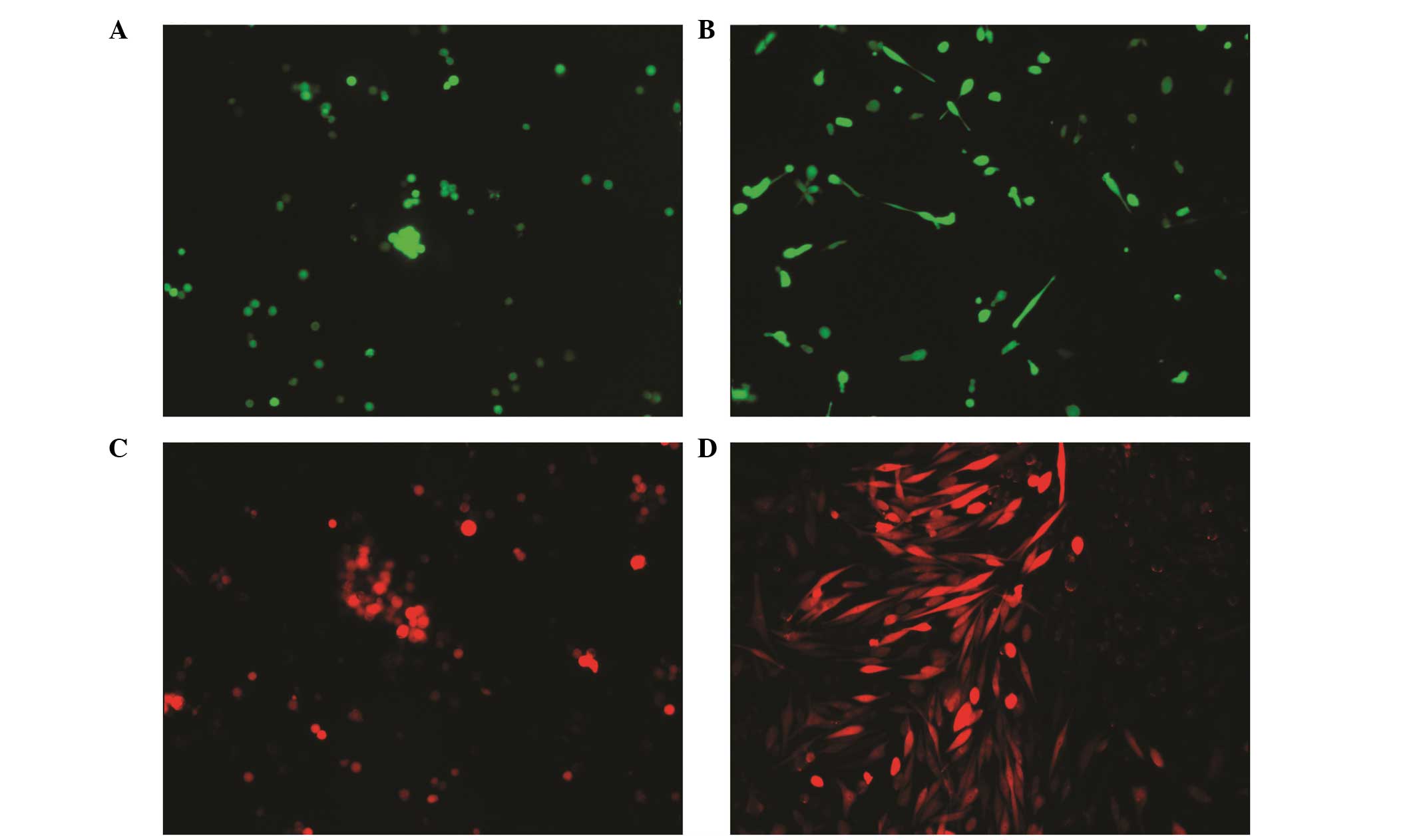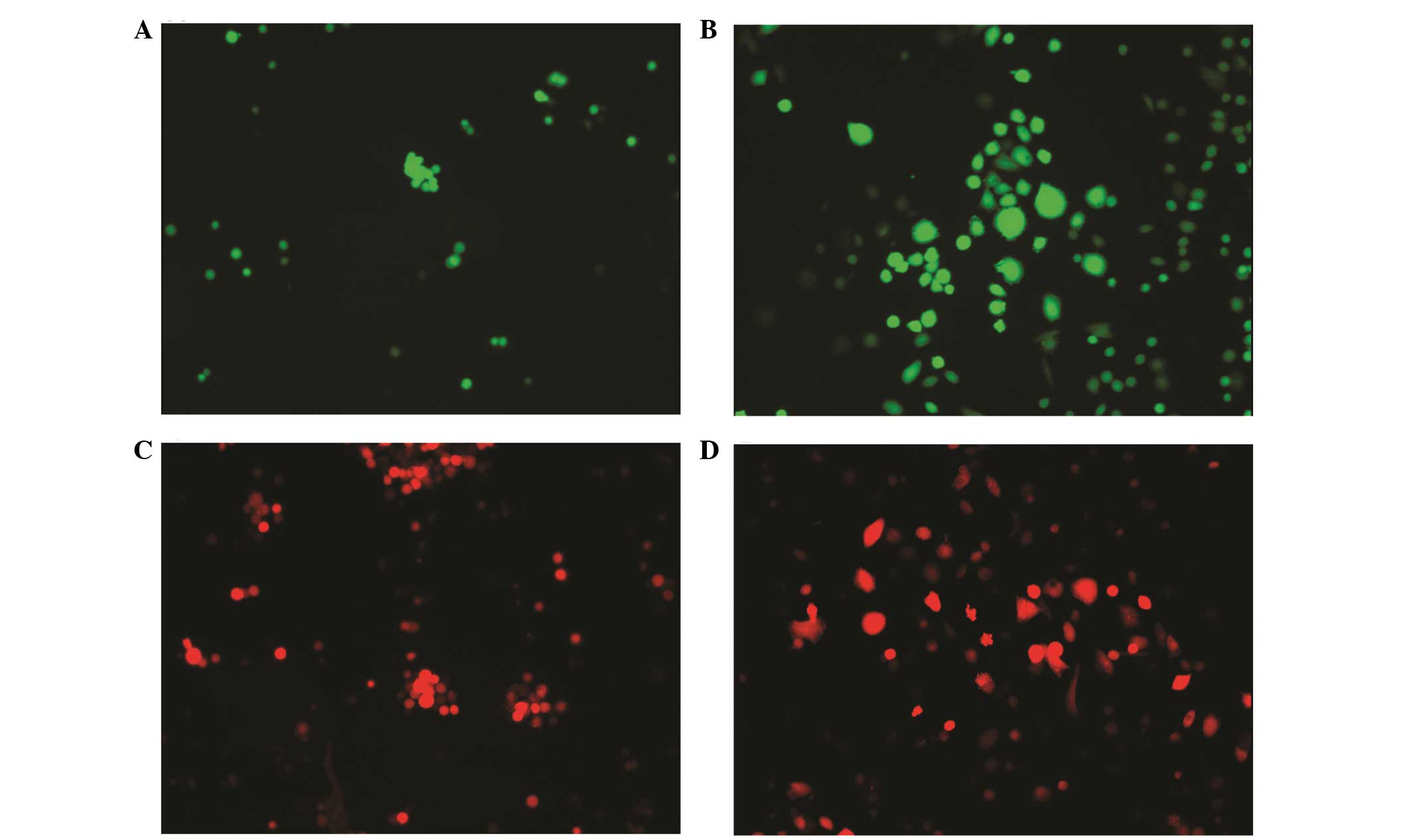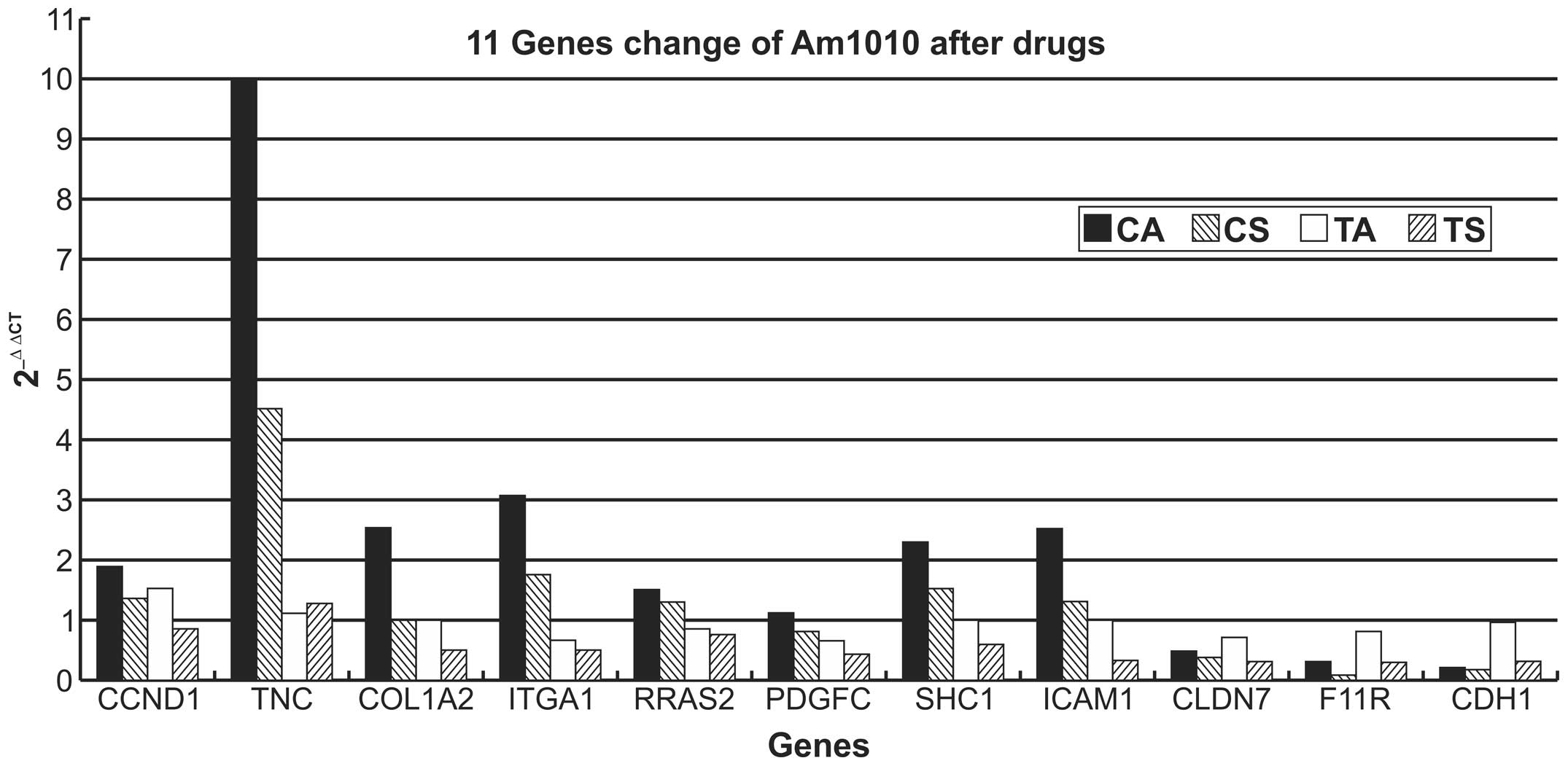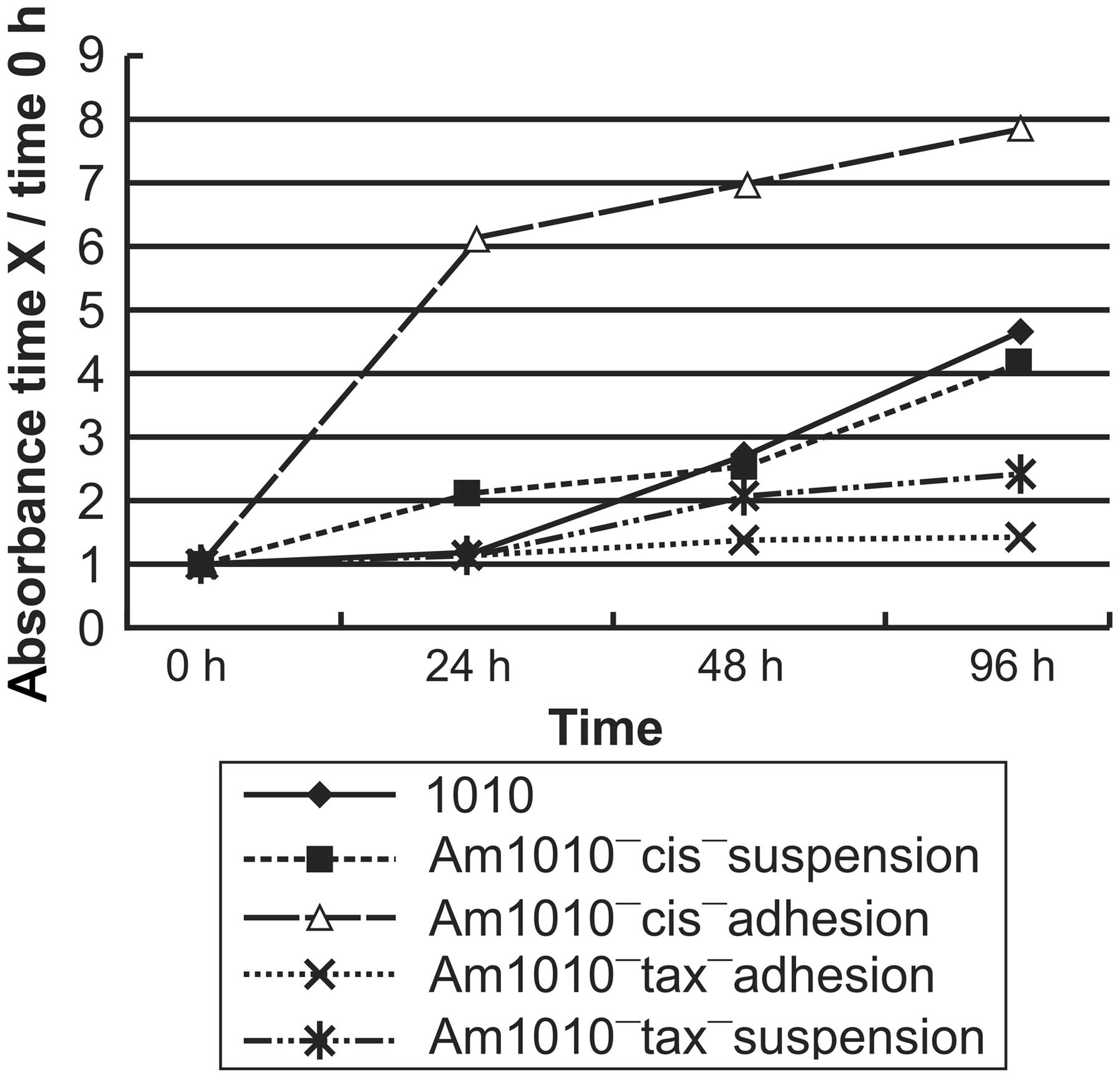Drug exposure in a metastatic human lung adenocarcinoma cell line gives rise to cells with differing adhesion, proliferation, and gene expression: Implications for cancer chemotherapy
- Authors:
- Published online on: May 25, 2015 https://doi.org/10.3892/mmr.2015.3837
- Pages: 3236-3242
-
Copyright: © Li et al. This is an open access article distributed under the terms of Creative Commons Attribution License [CC BY_NC 3.0].
Metrics: Total
Views: 0 (Spandidos Publications: | PMC Statistics: )
Total PDF Downloads: 0 (Spandidos Publications: | PMC Statistics: )
Abstract
The Am1010 cell line was previously established from a metastatic deposit in an arm muscle from a patient with lung adenocarcinoma who had undergone four cycles of chemotherapy with cisplatin and taxol. Am1010 cells were labeled with red fluorescent protein or green fluorescent protein. A total of eight sublines were isolated following in vitro exposure to cisplatin or taxol. The sublines differed with regard to their adhesion and proliferation properties, with certain sublines exhibiting an increased proliferation rate and/or decreased surface adhesion. Gene expression assays demonstrated that tenascin C; cyclin D1; collagen, type 1, α2; integrin α1; related RAS viral (r‑ras) oncogene homolog 2; platelet‑derived growth factor C; and Src homolog 2 domain containing in the focal adhesion pathway, and intercellular adhesion molecule 1, F11 receptor, claudin 7 and cadherin 1 in the cell adhesion pathway, varied in expression among the sublines. The results of the present study suggested that drug exposure may alter the aggressiveness and metastatic potential of cancer cells, which has important implications for cancer chemotherapy.














